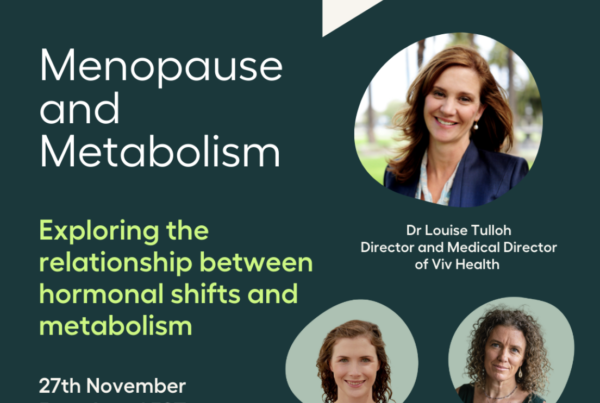Learn to ❤️ your heart
Cardiovascular disease (CVD) is the leading cause of death for women across the developed and developing world. CVD is responsible for 35% of deaths in women every year which is more than 13 times the rate of breast cancer deaths, and it is a preventable disease.
Cardiovascular disease refers to the condition of atherosclerosis development within artery walls. Atherosclerosis is the slow but gradual build-up of plaques containing cholesterol, other fats and inflammatory cells. It may eventually narrow the blood vessel and occasionally split causing your clotting system to suddenly block the artery in its attempts to repair and fix the damage. The main arteries that are affected include those that supply blood to the heart causing angina, heart attacks, heart failure and occasionally disorders of heart rhythm. Atherosclerosis in other blood vessels can also have negative impacts. For example, plaque build-up in the arteries supplying the brain can cause a stroke, build-up in the arteries supplying the legs can cause leg pain during physical activity, and less commonly, build-up arteries supplying important organs, such as the kidneys, can affect their function.
Some risk factors for CVD, such as age and family history, cannot be modified but many others can. Risk factors include hypertension, abnormal lipids, diabetes and associated lifestyle related issues including obesity, poor diet, lack of physical activity and smoking. Some lesser-known risk factors include mental health problems, chronic stress, cultural factors, poverty, poor health literacy and air pollution.
It is also becoming apparent that there are sex specific risk factors which include menopause, pregnancy related conditions, polycystic ovary syndrome and chronic inflammatory disorders which tend to be more common in females. Almost all adverse outcomes of pregnancy are also associated with an increased risk of CVD in later life.
Factors associated with the female reproductive system can increase the risk of developing cardiovascular disease. These factors include early onset of menstrual periods, irregular menstrual cycling, polycystic ovarian syndrome, stretches of time without periods (functional hypothalamic amenorrhoea) and infertility. Pregnancy related conditions including gestational diabetes, hypertension during pregnancy and preeclampsia, and indeed almost all adverse pregnancy outcomes are associated with and increased risk of later cardiovascular disease. Whilst these gender related conditions will occur in some women, menopause will be experienced by all women who live long enough. The rate of developing CVD rises significantly for women after menopause.
Cardio metabolic health changes at menopause
Falling oestrogen levels during menopause have a negative effect on cardiometabolic health. There is an increased prevalence of metabolic syndrome (high waist circumference, high blood pressure, abnormal blood lipids, abnormal blood sugar), weight gain (due to age) and increased central or abdominal fat (due to menopause). Metabolic syndrome is associated with increasing insulin resistance and impairment of the blood lipid profile, both risks for CVD. Metabolism is further impaired by reduced muscle mass following menopause. All these things contribute to increased cardiovascular risk and indeed the incidence of cardiovascular disease becomes more like that of the male population after menopause due to the loss of previously cardio-protective function of oestrogen.
Hot flushes, sweats and other symptoms
Evidence is increasing that women who experience early, prolonged or severe vasomotor symptoms (flushes and sweats), sleep disturbance and depression are more at risk of developing CVD. There may be associations between flushes and past history of hypertensive disorders of pregnancy, gestational diabetes and current obesity. It is unknown whether treating hot flushes will have any impact on cardiovascular disease.
Early menopause (where the last period occurs under the age of 45) or premature ovarian failure (where it occurs under the age of 40), are well-established risk factors for the increased development of CVD. Possible mechanisms include shared risk factors (family history, lifestyle and environmental factors) in addition to the premature loss of oestrogen.
Given that CVD increases after menopause, there has been considerable research to explore the impact of hormone therapy on CVD prevention. Research suggests there is a reduction in CVD in women who are treated with hormone therapy around the time of menopause, but not in women who commence hormone therapy after 10 years of their last period. In fact, there is a small increased risk in the first year of starting hormone therapy in such women.
The “timing hypothesis” suggests that atherosclerotic disease can be prevented by using hormone therapy in the window around the time of menopause to protect from CVD but this opportunity is lost when commenced later in life.
Is heart disease is different for women?
In addition to female specific risk factors, the presentation of heart pain can differ between males and females, although both groups most commonly present with typical chest tightness or discomfort.
Women may also present with atypical chest pain, shortness of breath, a sensation of weakness or fatigue and indigestion. They are less likely to identify symptoms of chest pain, numbness or jaw pain as common signs of a heart attack which leads to later presentation, delayed treatment and worse outcomes.
It has been commonly reported that the delivery of care also differs between males and females once they are within the healthcare system. Women are less likely to achieve time to treatment targets or be referred for cardiac catheterization (a procedure that both examines the heart’s arteries and inserts stents to unblock arteries).
Will hormone therapy protect you from heart disease?
Clinical trials suggest that the risk of heart disease is reduced in most women starting menopause hormone therapy close to the time of their last period. Hormone therapy is not currently indicated for the protection of CVD but it may well have this side benefit in those using it for other reasons.
For women with early menopause or premature ovarian insufficiency, hormone therapy is indicated until at least the age of 51 years in order to protect against the long-term consequences of low oestrogen, including osteoporosis and heart disease. Make of this apparently conflicting information what you will!
Commencing hormone therapy after the age of 60 or beyond ten years of your last period warrants careful consideration as there is unlikely to be any cardiovascular protective effect and there may be a short-term increased risk of a cardiovascular event depending on your existing risk factors, and which hormone therapy is being considered.
So how should women look after their hearts?
Healthy lifestyle behaviours include preventing weight gain, eating a nutritious diet high in fibre, vegetables, fruits and low in saturated fats and sugar, getting regular physical activity, good sleep and managing excessive stress will not only protect from the development of heart disease but also many other chronic diseases.
Identifying high blood pressure, abnormal blood lipids, insulin resistance or type 2 diabetes early and treating these conditions actively.
Be aware of the symptoms of heart disease and if in doubt present quickly to your nearest emergency department (and let them know you are concerned you are having a heart attack).
This information is for general educational purposes only and does not constitute medical advice. Please see your health professional for advice that is personalised to you.
Key Take Aways
Heart disease is the leading cause of death in women worldwide
Heart disease is preventable






